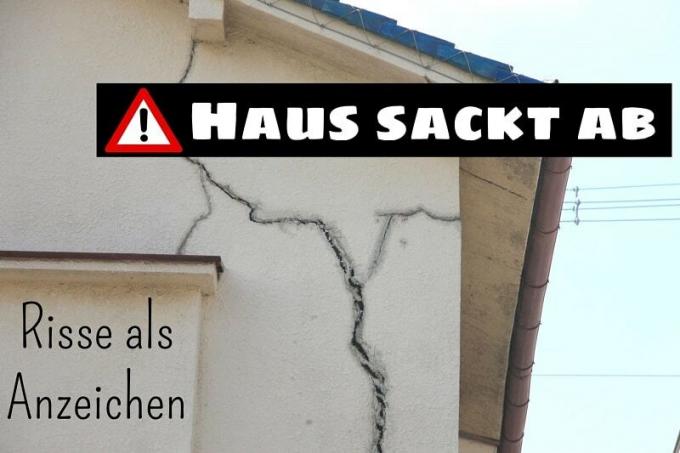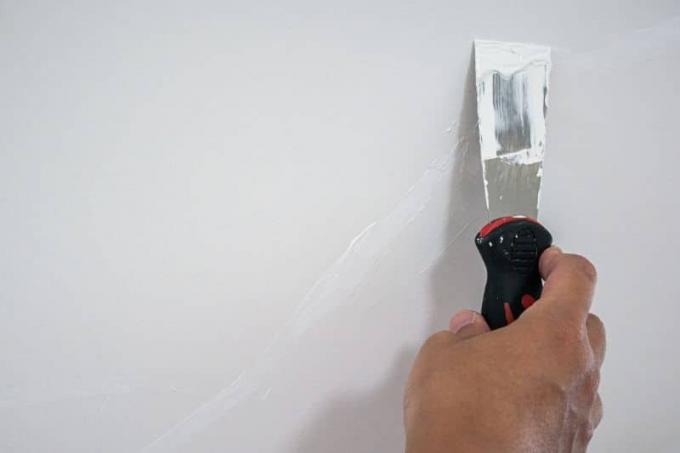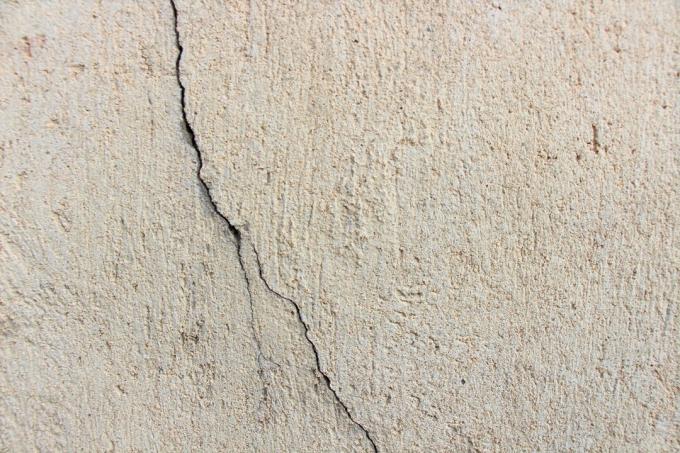
Every now and then one hears of houses that have sagged or buildings that have slipped down. How can this happen? How do you recognize early on that a house is sagging?
In a nutshell
- slight lowering in the millimeter range is no cause for concern
- look for the causes of cracks in the masonry
- Cavities in the ground possible cause for subsidence
- Settling cracks are normal to some extent in new builds
- Consult experts if necessary
Table of Contents
- House sags: causes
- signs of sagging
- crack types
- When to act
- frequently asked Questions
House sags: causes
If your house sags, this can have various causes. We have compiled the most common ones here.
Mining
If mineral resources are mined underground, cavities remain. Although these are filled with rock material and gradually close up, a subsidence of the ground surface cannot be completely ruled out with this procedure.
A notice: Anyone who enters old buildings in former mining areas often sees crooked floors and walls. Many historic buildings fell victim to subsidence damage.
natural events
Floods and storms with heavy rain can cause paved surfaces to be washed away and buildings to subside.
heavy traffic
Constant vibrations from heavy vehicles can cause soil compaction and subsidence. Cracks in the masonry are a first signal.

error in construction
If new buildings sink more than usual, it is usually missing or improper compaction of the subsoil is the cause.
dehydration
Not only too much water due to extreme weather events, but also severe drying out of the soil can be the reason for a building to subside. Untended plots of land that gradually become overgrown and overgrow require a lot of moisture. The associated dehydration can cause soil subsidence.
groundwater lowering
Extreme drought due to climate change may reduce water table entail. This in turn can cause the ground and buildings to subside.
construction work
If construction pits are dug in the vicinity of the property, rock material can slip off if the building is not secured properly or as a result of weather events. This in turn has an impact on surrounding buildings.
trees
Large trees and their roots emanate powerful forces that can trigger changes underground. Lowering of the building can follow. You should therefore always plant young trees at a sufficient distance from the house.

Tip: In the case of shallow-rooted trees, you should do this approximately at the expected height orientate while at deep rooters approximately half of the expected crown diameter serves as a guide. There is also a safety allowance of around two meters.
signs of sagging
Cracks often indicate that a house is sagging. Unfortunately, they often only attract attention when they have already reached a certain width. If this is the case, you should definitely consult a building surveyor. Together with him you now check the danger emanating from the crack.
be evaluated
- crack width and crack depth
- the place where the crack forms
- the number of cracks
- the extent depending on the total area
- the visual effect
- the time when the cracks first appeared
Not every crack in the masonry means a construction defect and not every crack is associated with a hazard. Therefore, the building surveyor also checks whether movements are to be expected in the future. Depending on whether the crack is "still working", a decision is made on the type of repair.

A notice: Some cracks are harmless and can be easily concealed.
crack types
plaster cracks
Plaster cracks usually only appear superficially in the plaster layer and are therefore rather harmless. There are types of plaster cracks:
shrinkage cracks
If the plaster contracts after drying, shrinkage cracks can occur. They run in a network or y-shape. They can hardly be avoided and can be well covered.
sack tears
Sack cracks are horizontal cracks in the plaster about ten centimeters long.
shrinkage cracks
Shrinkage cracks run like a net. They are at most 0.5 millimeters wide.
stress cracks
Where different components meet, for example in the area of the joints between the wall and ceiling, stress cracks can occur. Elastic joint materials are used to prevent this.
settlement cracks
If your house sags, cracks often play a role that should not be neglected. They are often caused by manual errors. They can be dangerous.

A notice: In new buildings, it is considered normal if the building 10 to 15 millimeters settles deep into the ground. This process can take several years. This means no problem if the floor is evenly firm. However, if the subsoil has not been sufficiently consolidated and is not even, the building may tilt when it is "seated".
Features:
- crooked cracks in the masonry
- can occur inside and outside
When to act
The most important difference between plaster cracks and dangerous settlement cracks is their length! If cracks longer than eight inches are, it may be a settlement crack. One is recommended here testing and sanitation. If you remain passive, your house may sag.

Plaster cracks and small hairline cracks in the interior, on the other hand, are more of a blemish that can be concealed. However, if plaster cracks appear on the outer facade, quick action is required. Moisture penetrates the masonry through the cracks, which can cause damage to the building.
frequently asked Questions
Cracks in masonry and plaster can pose a health hazard if mold can penetrate through them. Even the smallest cracks in the outer facade allow precipitation to penetrate the masonry and the interior. Moisture is the prerequisite for mould. So watch out for small cracks. Commission trained craftsmen with the renovation.
Construction professionals speak of hairline cracks when they mean fine cracks up to 0.2 millimeters wide.
Technical methods are now available with which cavities in the subsoil can be subsequently filled, so that compaction and an uplift reaction take place. This allows settlement cracks to close and eliminate the problem.



